It can be confusing hearing that you have arthritis, but it may be even more confusing when told that it is either osteo- or rheumatoid arthritis. What does that mean? What is the difference? Do I have to stop exercising now that I have arthritis?
The difference between osteoarthritis and rheumatoid arthritis
Osteoarthritis is the more common arthritis; it consists of the thinning of the cartilage lining around the bones of a joint. Rheumatoid arthritis is an autoimmune disease, meaning that the immune system is malfunctioning. The immune system begins to attack the synovial membrane throughout joints of the body. Rheumatoid arthritis usually affects multiple joints in the body, whereas osteoarthritis will usually start in only one joint, but may affect multiple joints.
Symptoms of rheumatoid arthritis include
- Swelling of the joints
- Warmth in the joints
- Pain and stiffness in the joints
- Symmetry – pain will often be felt in the same spot on each side of the body
- Fatigue
- Lack of appetite
Symptoms of osteoarthritis include
- Pain and stiffness around the affected joint
- Muscle weakness around the affected joint
- Cracking or crunching sounds in the joint
- Swelling or deformity of the joint
- How to diagnose osteoarthritis and rheumatoid arthritis
Osteoarthritis can be diagnosed through a physical examination and can often be confirmed with an X-ray. The diagnosis of rheumatoid arthritis often requires blood tests or imaging.
How are the two conditions managed?
The best management for osteoarthritis is exercise specifically targeting the muscles surrounding the affected joint. Exercise can help to strengthen the joints and improve function during daily activities. Other alternatives to exercise include manual therapy, medications, corticosteroid injections and, in some cases, surgery.
If diagnosed with rheumatoid arthritis, it is generally wise to begin seeing a rheumatologist, who can ensure you are prescribed the ideal medication for your condition. Exercise can also be beneficial for rheumatoid arthritis, whilst again in some cases surgery is an option.
Physiotherapy for osteoarthritis and rheumatoid arthritis
At Watsonia Physiotherapy, we treat both osteoarthritis and rheumatoid arthritis.
For people with osteoarthritis, your physiotherapist will likely provide you with education regarding your condition, and then provide you with a home exercise program aiming to strengthen the affected joint. For those people suffering from hip or knee osteoarthritis, the GLAD program will be offered. The GLAD program is designed specifically for people with hip and knee osteoarthritis and runs for 6 weeks. It is based on the best available evidence for treating knee and hip osteoarthritis. If you decide the GLAD program is not for you, your physiotherapist will still be able to help you manage your osteoarthritis on one.
Other treatment options such as manual therapy or bracing are also options, these are often used in conjunction with exercise.
Treatment for rheumatoid arthritis will also largely consist of exercises to help strengthen muscles that may have been weakened because of lack of use. Often when the joints become inflamed and swollen, the natural mechanism is to protect them by not moving them. Physiotherapists work with the patient to find exercises that are tolerable and allow the patient to regain strength and mobility in their joints. The goal of these exercises is to increase the functional capacity of those suffering from rheumatoid arthritis.
As is the case with osteoarthritis, techniques such as manual therapy and education about the condition are often used by the physiotherapist as well to achieve the best outcome for the patient.
If you are interested in learning more about the GLAD program, click here or book in with one of our GLAD-trained physiotherapists, Chris and Sue.
